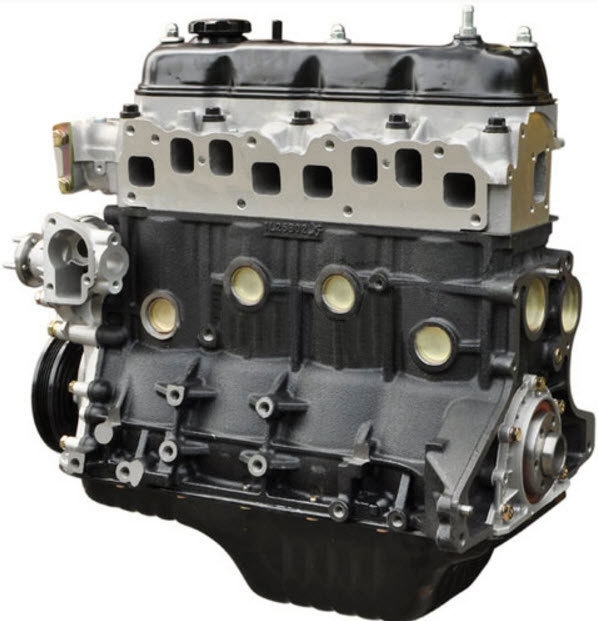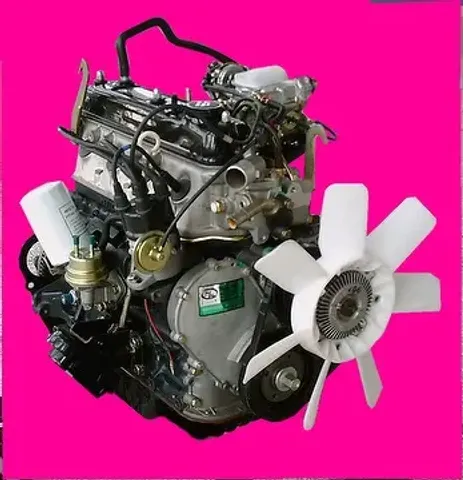How the 4Y Engine Contributes to a Smooth and Powerful Driving Experience
How the 4Y Engine Contributes to a Smooth and Powerful Driving Experience
Blog Article
The Ultimate Overview to the Engine: Trick Insights for every single Automobile Lover
Recognizing the engine is basic for any kind of automotive lover, as it offers as the heart of the car and dictates its efficiency. This overview provides a comprehensive assessment of engine makeup, kinds, and the technicians behind their procedure, including the cutting-edge technologies that are reshaping the automotive landscape. It emphasizes the vital nature of maintenance techniques that can dramatically affect an engine's life-span. The complexities of engine dynamics and the most current advancements in innovation present concerns that warrant more expedition. What might these insights reveal regarding the future of vehicle engineering?
Makeup of an Engine
Recognizing the makeup of an engine is important for any kind of cars and truck fanatic aiming to dive deeper into automobile auto mechanics. An internal burning engine primarily contains numerous vital components that work in unison to transform gas into power.
At the heart of this system exists the cyndrical tube block, which houses the cylinders where burning takes place. Piston motion within these cylinders is facilitated by the crankshaft, which equates direct motion right into rotational power. Furthermore, the camshaft plays an essential duty in managing the opening and closing of the engine's shutoffs, making sure appropriate air-fuel mixture intake and exhaust gas expulsion.
Various other crucial parts consist of the gas system, which provides the engine with the needed gas, and the ignition system, accountable for starting burning - 4y engine. The cooling and lubrication systems are also essential, maintaining optimal operating temperatures and reducing friction, respectively
Engine Kinds and Configurations
A diverse range of engine types and setups exists, each offering one-of-a-kind advantages and drawbacks tailored to different driving needs and choices. The most typical engine kinds consist of inline, V, level, and rotary arrangements.
Inline engines, featuring cylinders organized in a solitary line, are understood for their simpleness and performance. They are often discovered in portable vehicles, using an equilibrium of power and economic climate. V engines, identified by their two financial institutions of cyndrical tubes prepared in a V shape, offer higher performance and smoother operation, making them prominent in sports and luxury automobiles.
Flat engines, or fighter engines, have flat opposed cyndrical tubes, which add to a lower center of mass, enhancing car stability. These are frequently seen in brand names like Subaru and Porsche.
Rotary engines, although much less common, use an one-of-a-kind style with a triangular blades and offer high power-to-weight proportions. They excel in small and light-weight applications, primarily seen in Mazda vehicles.
Each engine kind offers particular performance qualities, weight distributions, and gas effectiveness, ensuring that vehicle lovers can choose the best engine arrangement to match their driving design and lorry requirements.

Exactly How Engines Work
Engines, no matter of their kind or configuration, operate on essential principles that control their efficiency and performance. At their core, engines transform gas into power through a collection of regulated surges or compressions. This procedure commonly involves 4 major strokes: intake, exhaust, power, and compression.
During the consumption stroke, the engine pulls in a combination of air and fuel. The compression stroke follows, where the mix is compressed in the cylinder, boosting its temperature and stress. In the power stroke, a spark stirs up go to my site the pressed mix (in fuel engines) or the combination fires up spontaneously (in diesel motor), causing a rapid development of gases that presses the piston down. Finally, the exhaust stroke eliminates the spent gases from the cylinder.
The performance of an engine is influenced by numerous factors, including the style of the burning chamber, the kind of gas made use of, and the accuracy of the engine's parts. Comprehending these essential concepts is vital for vehicle lovers that look for to value the detailed auto mechanics behind their vehicles, along with for those aiming to enhance performance through alterations and tuning.
Technologies in Engine Modern Technology
In current years, advancements in engine innovation have actually substantially transformed the automotive landscape, improving both efficiency and ecological sustainability. One of the most notable developments is the growth of turbocharging and supercharging, which permits smaller engines to generate greater power outputs without compromising fuel performance. This has resulted in a rise in the popularity of downsized engines, giving manufacturers with the capability to meet rigid emissions regulations while preserving performance criteria.
In addition, hybrid and electric powertrains are reshaping the engine standard. Crossbreed systems combine interior combustion engines with electrical motors, maximizing fuel usage and minimizing exhausts. Fully electric lorries (EVs) get rid of the burning engine completely, counting on innovative battery innovation to supply immediate torque and remarkable velocity.
In addition, the integration of expert system and maker understanding in engine administration systems enables real-time optimization of efficiency specifications, boosting performance and responsiveness. Developments such as variable valve timing and direct gas injection better fine-tune burning processes, optimizing power outcome while decreasing waste.
As the vehicle industry proceeds to progress, these technologies in engine innovation will certainly play a vital role in shaping the future of flexibility, prioritizing both performance and sustainability.
Maintenance Tips for Lovers
Preserving an engine is as important as the technologies that boost its efficiency. Routine upkeep not just extends the life of your engine however additionally ensures optimum efficiency. Beginning with regular oil adjustments, complying with the manufacturer's suggestions for oil company website type and change periods. Clean oil lubes engine components properly, stopping damage.
Change and inspect air filters occasionally to ensure appropriate air flow, which is essential for combustion efficiency. A clogged air filter can cause decreased performance and boosted gas usage. Similarly, monitor the coolant levels to protect against getting too hot, and change coolant according Continue to the solution schedule.

Final Thought
In final thought, a comprehensive understanding of engine makeup, kinds, and mechanics is vital for auto fanatics. Regular upkeep techniques, consisting of oil modifications and air filter checks, are vital for making certain optimal engine capability and durability.

Engines, regardless of their kind or setup, run on basic concepts that regulate their efficiency and efficiency. In the power stroke, a stimulate ignites the compressed combination (in gas engines) or the blend sparks automatically (in diesel engines), resulting in a fast growth of gases that presses the piston down.In current years, improvements in engine innovation have dramatically transformed the auto landscape, boosting both efficiency and ecological sustainability.
Report this page